This article is brought to you by the legendary Greg Sewart of classic EGM fame. He currently produces the outstanding video series, Generation-16 on Youtube, and co-hosts the Player One Podcast with Chris Johnston, Phil Theobold, and Ethan Einhorn.
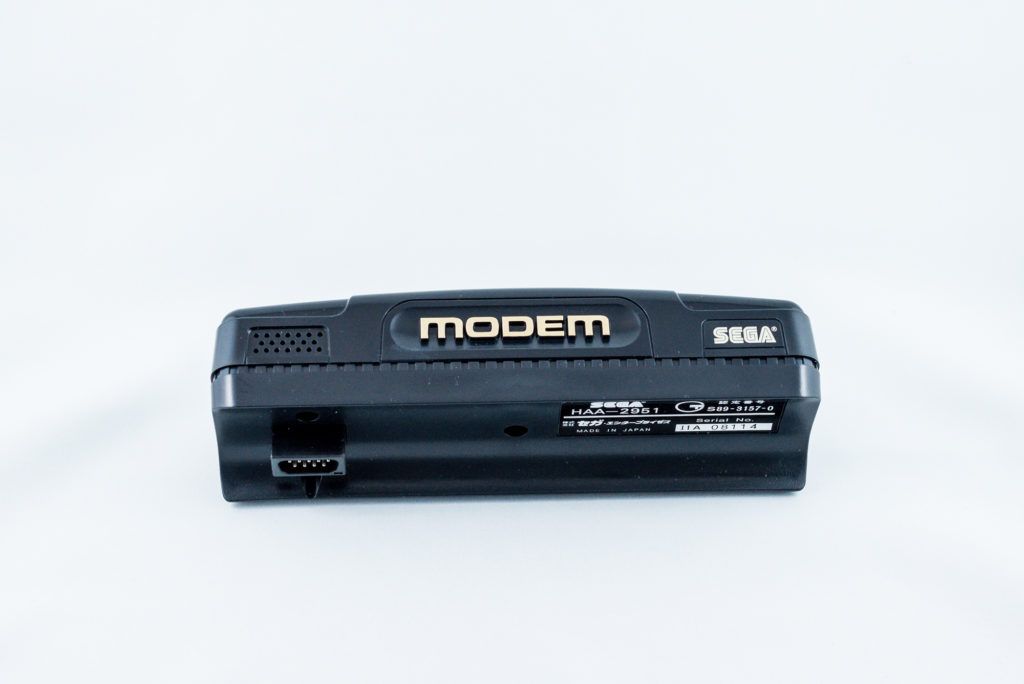
RELEASE DATE: 11/03/90 – (JP), 1991 – (JP, with Game Toshokan)
Sega’s often leaped before looking, taking chances on bleeding edge technology before it’s ready for prime time. The Mega Modem represents one such occasion.
Released on November 3, 1990, the Mega Modem launched in Japan for 9800 yen or approximately $75 US dollars. With this compact little device plugged into the 21-pin expansion port on the back of the Mega Drive, you were ready to play head-to-head against gamers across town on a screaming 2400 bps!

Early adopters had three games to choose from at launch. Sega’s own CyberBall (a port of the classic Atari arcade football game), and from Sunsoft, Tel-Tel Mahjong and Tel-Tel Stadium. The first was, of course, a mahjong game, while the second was a kind of baseball management simulator.
Ever since the late ‘70s there was a drive to turn home game consoles into something more. To make them the centerpiece of a family-friendly computer – something Mom and Dad could use to do their banking or check stock prices. Sega was no different, and the Mega Modem was a key piece in its attempt to do something like this with the Mega Drive.
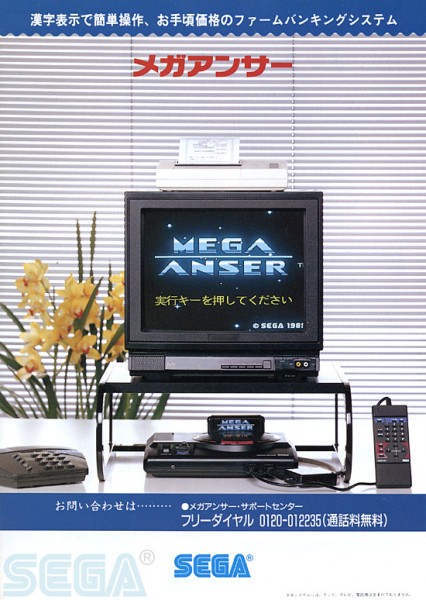
The Mega Anser (yes, that’s the correct spelling) was banking software that users could buy as a standalone cartridge, or as part of a suite of hardware that included a printer and 10-key pad to make navigation easier. The entire bundle retailed for 72,800 yen, or approximately $560 USD. Other productivity cartridges were released for the system as well, including software for the Bank of Nagoya, the Bank of Osaka, and Sumimoto Life Insurance.
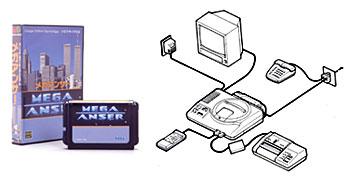
The biggest draw for gamers when it came to the Mega Modem was the Sega Game Toshokan (Sega Game Library) cartridge and the MegaNet service. A subscription to MegaNet got players access to an online newsletter and a selection of downloadable games for their Mega Drive, all for about six dollars a month.
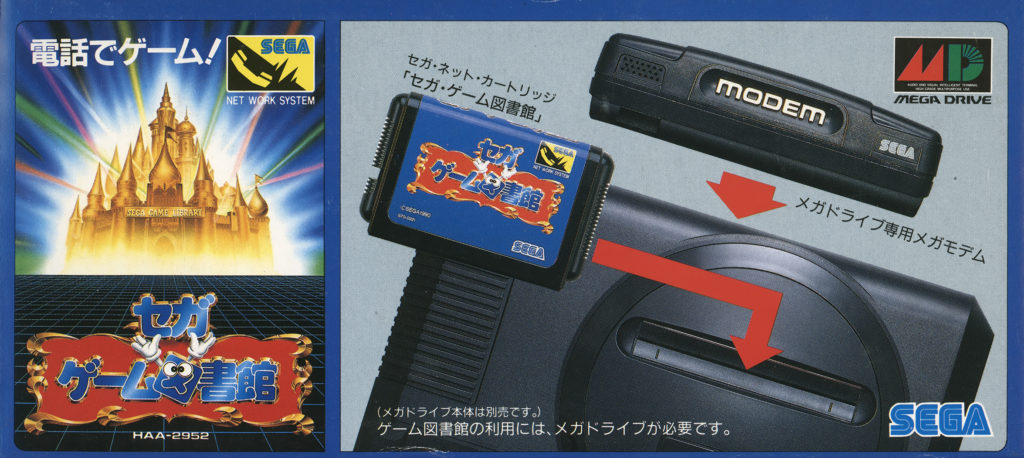
With the Game Toshokan cartridge, subscribers could download two games right off the bat on launch day: Putter Golf and Phantasy Star II: Amia no Boken. The first is basically minigolf, very reminiscent of Putt & Putter on the Master System. The second is the first in a series of text adventures that revealed the backstory of every hero character in Phantasy Star II.
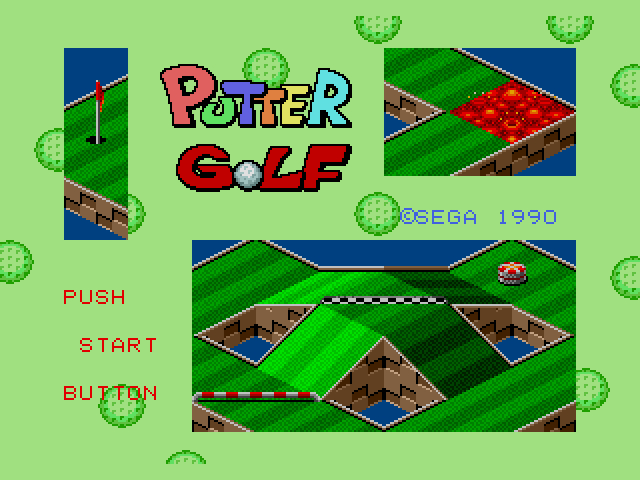
Over the following two years, another 25-or-so games were released to the service, including games that were released as cartridges in North America, like Flicky and Fatal Labyrinth.
Sadly, the service was discontinued around February ‘93, rendering this cool little piece of hardware basically obsolete. Luckily, all of those Toshokan games were preserved and re-released through the Game no Kanzume series on the Mega CD.
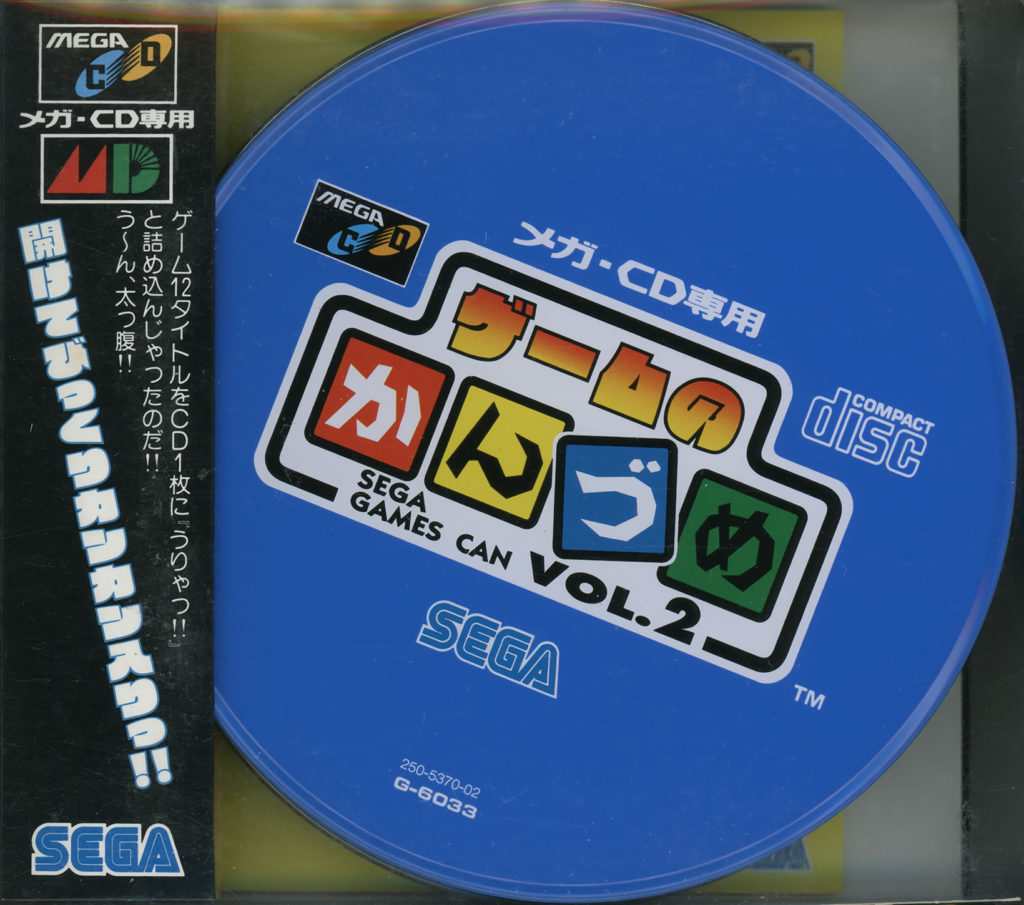
Sega put the final nail in the Mega Modem’s coffin in 1993 when it released the redesigned Mega Drive 2. This new, sleeker version of the system did not have the proper ports (or shape) to be compatible with the Mega Modem.
The party wasn’t totally over, though. In 1994 a version of SanSan (an online Go service) was released for the Mega Drive, which allowed players with the console and a Mega Modem to play head to head against other players on the service, including cross play with PC gamers. The Mega Drive version apparently didn’t last very long, and the cartridge is considered one of the rarest on the system.

The Mega Modem was way ahead of its time. Along with online play, it even offered online voice chat with the built-in microphone. Unfortunately, being ahead of its time was ultimately its downfall. Head-to-head online gaming would become huge, but not for another decade.
Sega of America COO at the time, Shinobu Toyoda, said in an interview in the “Sega Mega Drive/Genesis Collected Works” that SOA actually demonstrated a baseball game being played online during the summer CES in 1991. However, latency was just too high to allow for a good playing experience. This is likely why Sega of America never released the modem in North America, in spite of heavily advertising the renamed TeleGenesis Modem.
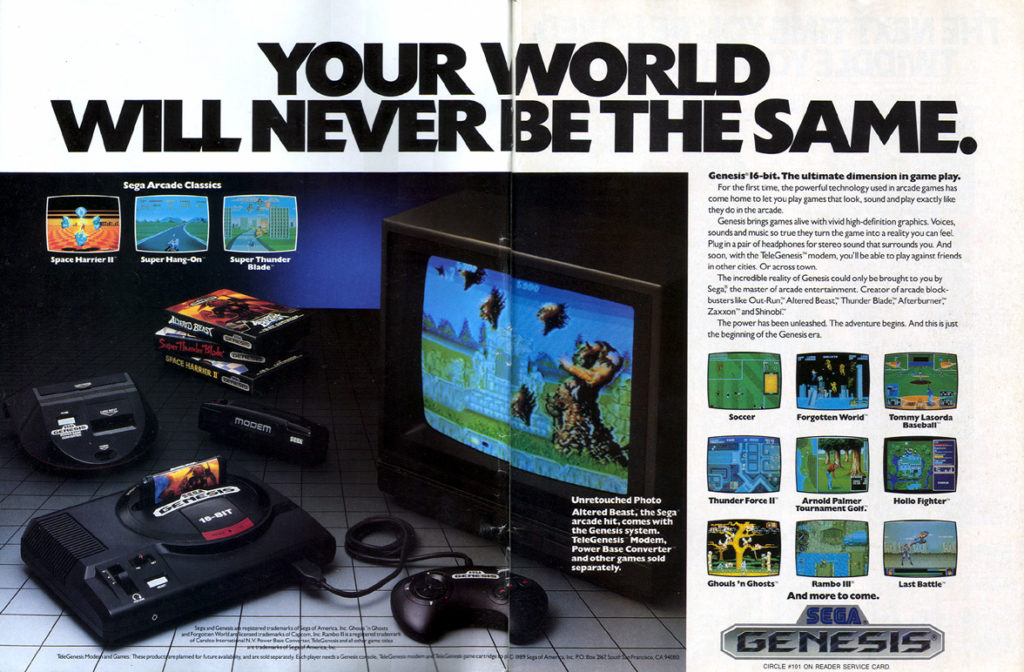
The Mega Modem is important. Even though it didn’t last that long, it helped blaze a trail for subsequent hardware and services like the X-Band, Sega Channel, and the always-online, digital download future we live in today.

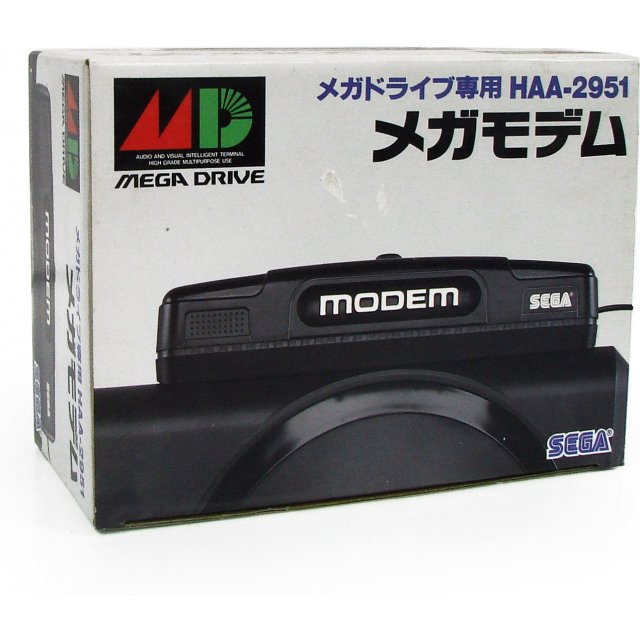
4 replies on “The Sega Mega Modem (Mega Drive, 1990)”
Are you sure a relatively cheap consumer modem from 1991 was 33.6K? Seems rather too fast when the general standard then was 2400 baud!
You’re correct! Fixed.
It’s fascinating how far ahead of its time Sega was with its hardware and technology initiatives. Really, aside from the continued focus on 2D with the Saturn, and sort of stumbling into 3D, most of its hardware was ahead of the curve, as compared to its primary competitor(s). The modem is no exception, and I wonder how many of these products were released for game consoles prior to Sega jumping into that market.
It’s strange to think that Sega expected the 32X to be more of their 3D “console,” while the Saturn was supposed to be the high-tech 2D machine. Mid-90s Sega was just crazy.